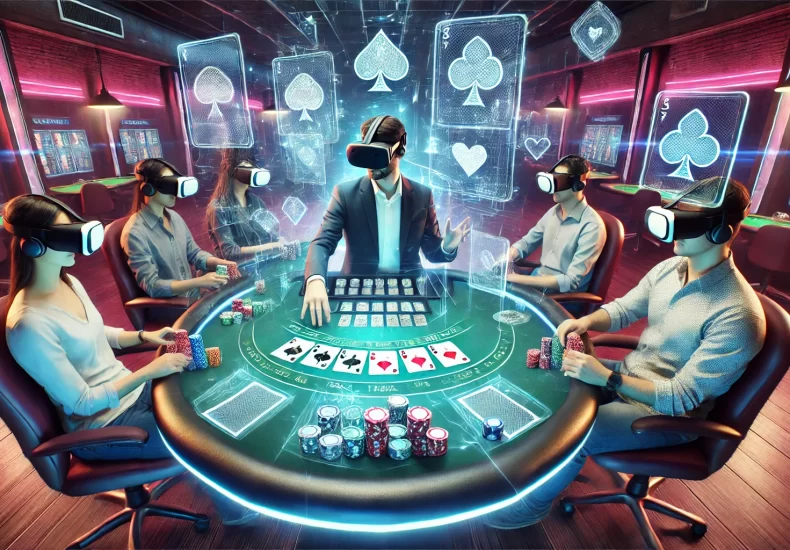
Aces in Cyberspace: How VR is Reshaping the Poker Landscape
The poker landscape has evolved dramatically since the days of smoky backrooms and high-stakes casino tables. Online poker brought the game to our fingertips, and now, virtual reality is taking it a step further. VR poker combines the convenience of online play with the social atmosphere of a live game, creating a unique experience for players of all levels.
The Rise of Virtual Reality Poker
Virtual reality poker is more than just a gimmick. It’s a growing trend that’s catching the attention of both casual players and serious grinders. Here’s why it’s gaining traction:
- Immersive Experience: VR headsets transport players to virtual poker rooms, complete with realistic graphics and 3D avatars.
- Social Interaction: Players can chat, read tells, and interact as if they were sitting at a real table.
- Convenience: Enjoy a live poker atmosphere from the comfort of your home.
- Customisation: Many VR poker platforms allow players to personalise their avatars and surroundings.
- Innovative Features: Some VR poker rooms offer unique game modes and interactive elements not possible in traditional online or live poker.
The technology behind VR poker is constantly improving, with better graphics, more realistic physics, and smoother gameplay. As VR headsets become more affordable and accessible, we can expect to see a surge in the popularity of virtual reality poker.
How VR Poker Works
To play VR poker, you’ll need a few key components:
- VR Headset: Devices like Oculus Quest or HTC Vive are popular choices.
- VR-compatible computer or console
- VR poker software or app
- Internet connection
Once you’re set up, you’ll find yourself in a virtual poker room. You can look around the table, see your cards, and interact with chips and buttons using hand controllers or gestures. Many platforms use spatial audio, so you can hear other players based on their position at the table.
The gameplay itself mirrors traditional poker, with standard rules and betting structures. However, the VR environment adds new dimensions to the experience, such as the ability to read opponents’ body language or engage in table talk.
Pros and Cons of VR Poker
Like any new technology, virtual reality poker has its advantages and drawbacks. Let’s take a look at some of them:
| Pros | Cons |
|---|---|
| Immersive experience | Initial equipment cost |
| Social interaction | Potential for motion sickness |
| Convenience of playing from home | Limited player pool (for now) |
| Innovative features | Technical issues and learning curve |
| Potential for improved game analysis | Lack of physical chip handling |
While the pros are enticing, it’s worth noting that VR poker is still in its early stages. As the technology matures, we can expect many of these cons to be addressed.
The Future of VR Poker
The potential for virtual reality poker is vast. As the technology improves, we might see:
- Tournaments with thousands of players in a single virtual space
- Advanced AI opponents for training and practice
- Integration with live poker events, allowing remote players to join physical tournaments
- Enhanced analytics and heads-up displays for strategic play
- Virtual celebrity poker games and interactive lessons from pros
These possibilities are exciting, but it’s important to remember that poker, in any form, should be enjoyed responsibly. VR poker, like its traditional counterparts, is about entertainment and skill-building, not a path to riches.
As we look to the future, it’s clear that virtual reality poker is more than just a passing fad. It’s a natural evolution of the game, blending the best aspects of online and live poker into a unique, immersive experience. While it may not replace traditional poker entirely, VR is certainly pulling up a seat at the table.
All in all, whether you’re a seasoned pro or a curious newcomer, virtual reality poker offers a fresh way to enjoy this timeless game. As the technology continues to improve and more players don their headsets, we may find that the next big poker boom is happening in a virtual world. So, are you ready to take a seat at the digital felt?
Leave a Reply